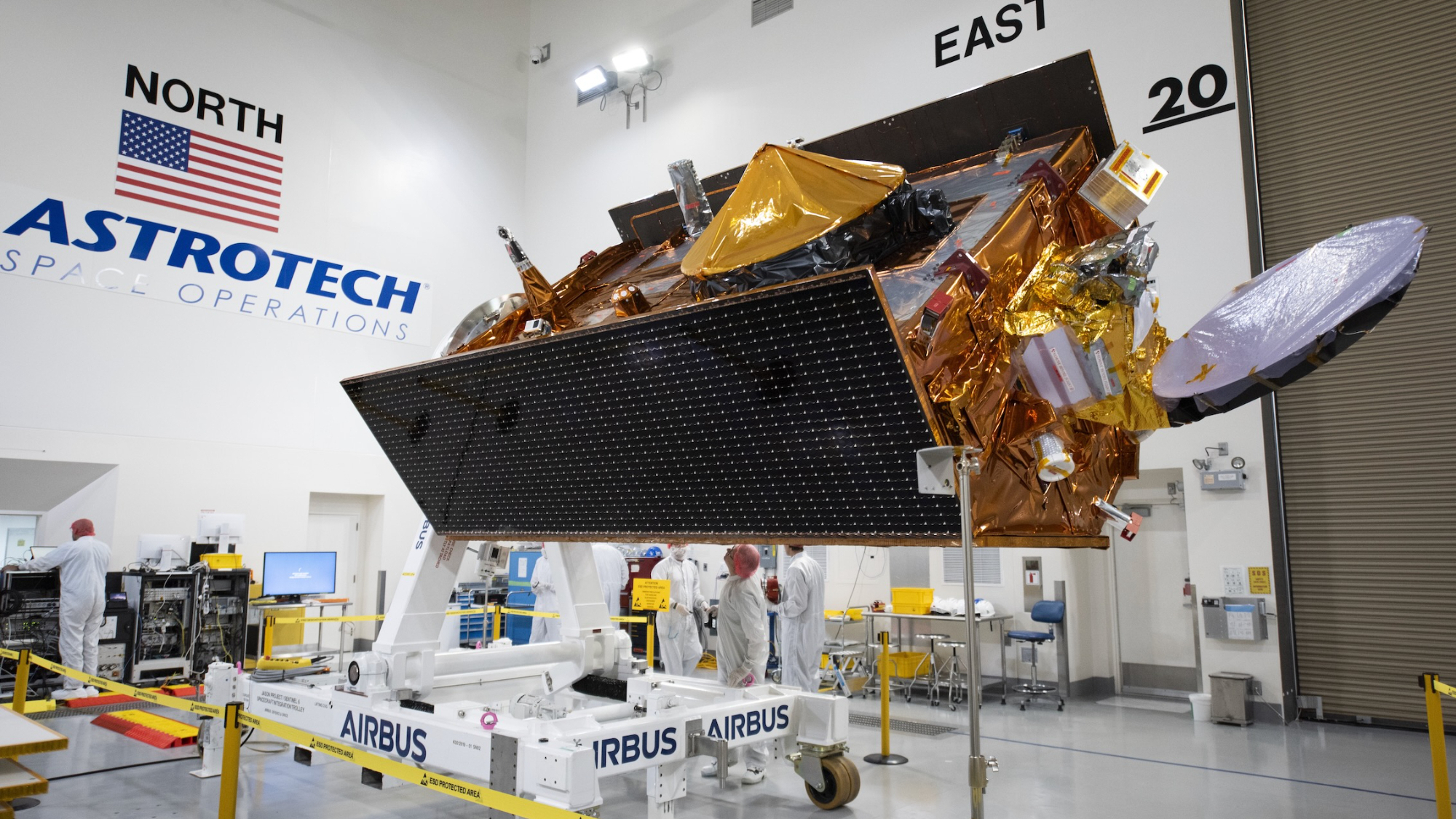Watch SpaceX launch powerful ocean-mapping satellite for Europe and NASA early Nov. 17
Liftoff of the Sentinel-6B satellite is scheduled for 12:21 a.m. ET on Monday (Nov. 17).
SpaceX will launch an advanced ocean-mapping satellite from California early Monday morning (Nov. 17), and you can watch the action live.
The Sentinel-6B spacecraft is scheduled to lift off atop a Falcon 9 rocket from Vandenberg Space Force Base on Monday at 12:21 a.m. EDT (0521 GMT; 9:21 p.m. on Nov. 16 local California time).
You can watch the launch live here at Space.com courtesy of NASA, or directly via the space agency. Coverage will begin at 11:30 p.m. EDT on Sunday (Nov. 16; 0430 GMT on Nov. 17).

Sentinel-6B is part of the European Union's Copernicus Earth-observing program. The new satellite will measure sea surface heights around the globe with great accuracy, continuing the work of its predecessor, Sentinel 6 Michael Frelich, which launched atop a Falcon 9 in November 2020.
"Monitoring sea-level rise is high on the global agenda," European Space Agency (ESA) officials wrote in a Sentinel-6B mission description.
"In the past 25 years, the average height of the world's oceans has risen by almost 10 cm [4 inches], according to data from Copernicus," they added. "The Copernicus Sentinel-6 mission has become the gold standard reference mission to monitor and record this key consequence of climate change."
Sentinel-6B will do this work using a radar altimeter instrument developed by ESA. The satellite also carries a NASA-provided microwave radiometer, which will determine atmospheric water content, allowing for more accurate interpretation of the altimeter's results.
Breaking space news, the latest updates on rocket launches, skywatching events and more!
During its first year of observations, Sentinel-6B will work with Sentinel 6 Michael Frelich, "enabling greater accuracy with precise cross-calibration between the two instruments," ESA officials wrote about the mission, which is a collaboration among the European Commission, ESA, NASA, Eumetsat, and the U.S. National Oceanic and Atmospheric Administration, with support from the French space agency CNES.
If all goes according to plan on Monday morning, the Falcon 9's upper stage will deploy Sentinel-6B about 57 minutes after liftoff. The 3,175-pound (1,440 kilograms) satellite will then make its way to its science orbit, which lies 830 miles (1,336 kilometers) above Earth.
The Falcon 9's first stage, meanwhile, will come back to Vandenberg for a landing about nine minutes after liftoff. It will be the third flight for this particular booster; its previous two missions lofted batches of SpaceX's Starlink broadband satellites, according to the company.

Michael Wall is a Senior Space Writer with Space.com and joined the team in 2010. He primarily covers exoplanets, spaceflight and military space, but has been known to dabble in the space art beat. His book about the search for alien life, "Out There," was published on Nov. 13, 2018. Before becoming a science writer, Michael worked as a herpetologist and wildlife biologist. He has a Ph.D. in evolutionary biology from the University of Sydney, Australia, a bachelor's degree from the University of Arizona, and a graduate certificate in science writing from the University of California, Santa Cruz. To find out what his latest project is, you can follow Michael on Twitter.
You must confirm your public display name before commenting
Please logout and then login again, you will then be prompted to enter your display name.

